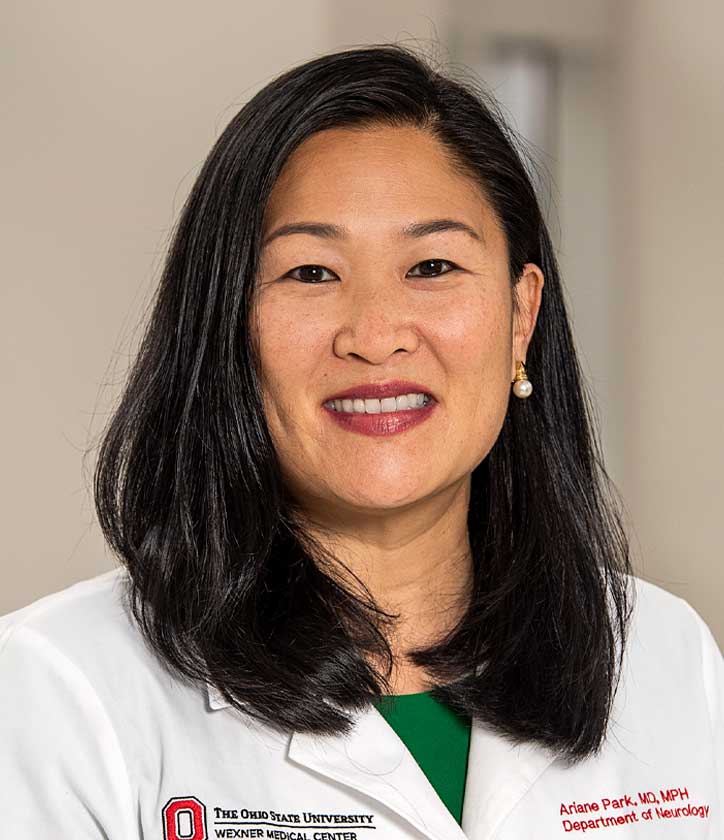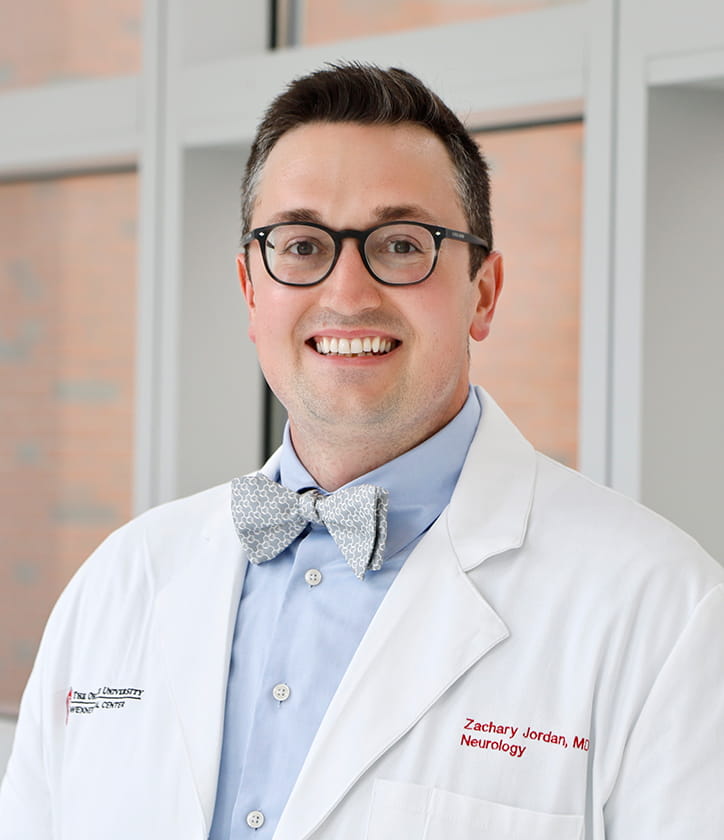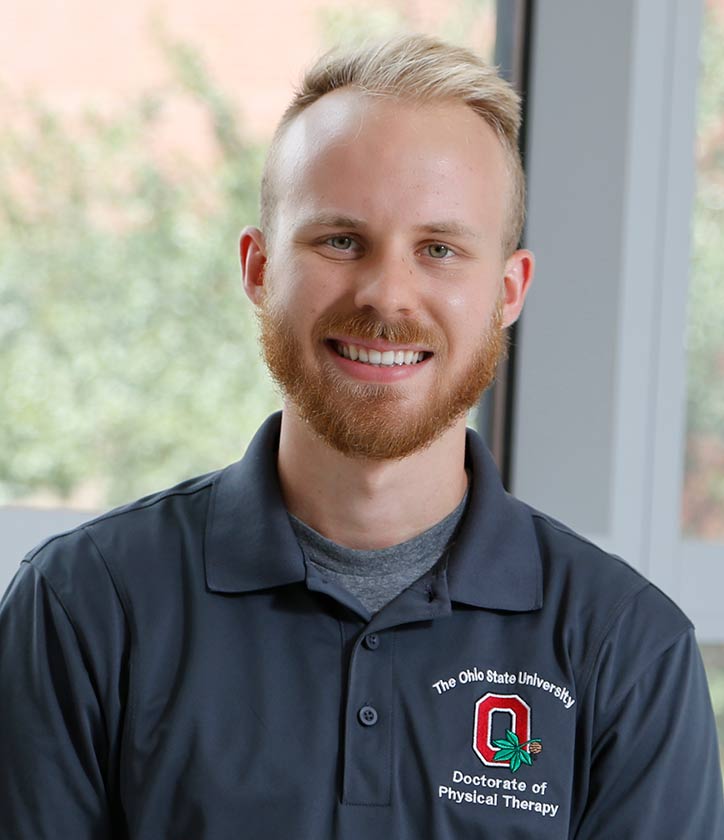Although there isn’t a current cure for Parkinson’s disease (PD), Ohio State’s Center for Parkinson’s Disease and Related Movement Disorders gives you access to the latest treatments and resources to help you achieve your best possible quality of life. This includes medical care, advanced surgery, education, rehabilitation and social services.
To simplify your ongoing treatment, we’ll coordinate all of your appointments to a single day whenever possible. In addition, details of each appointment are shared across your care team, so every specialist you see is up to date on all of your treatments and the effect they have on your symptoms.
Your personal care team
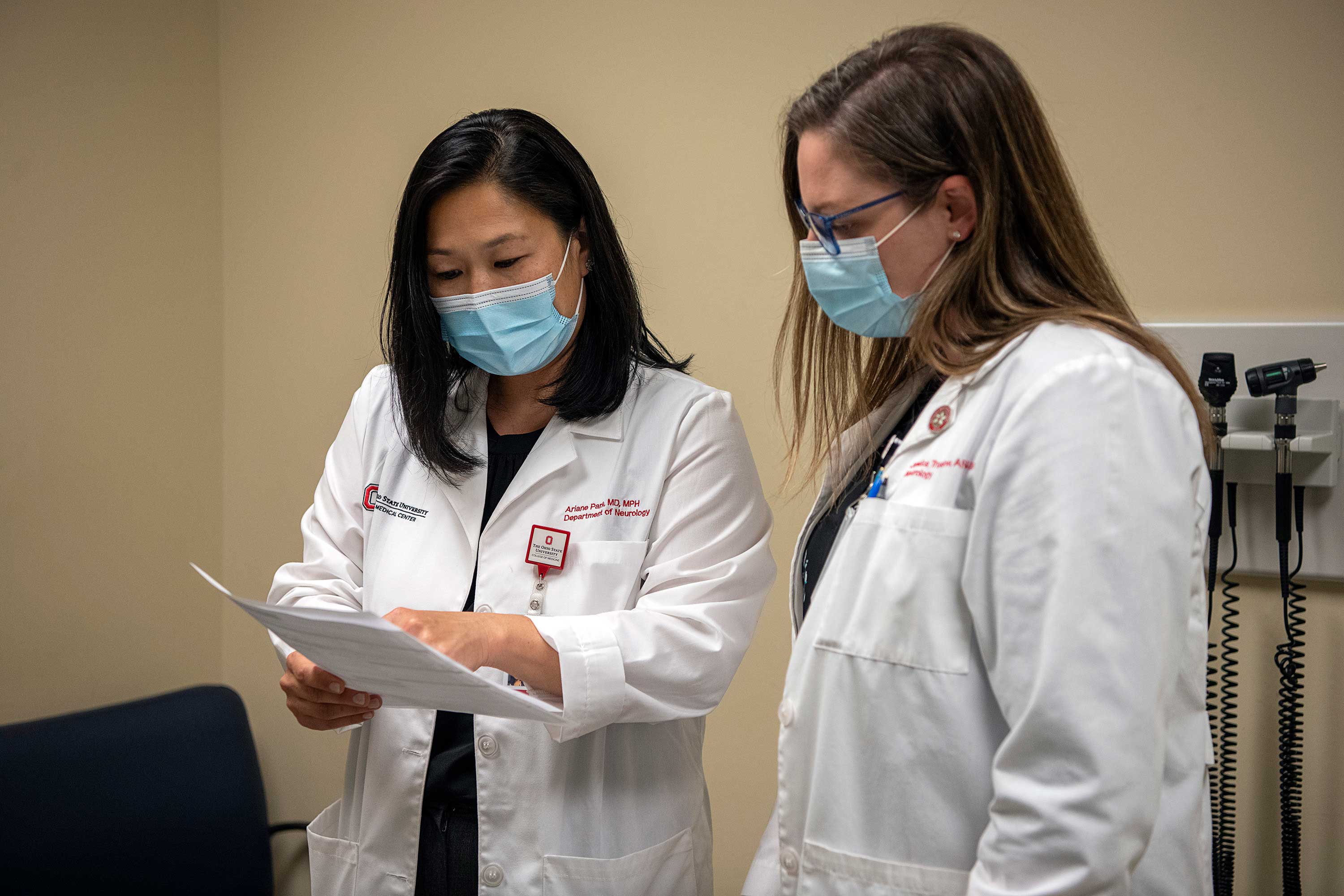 Whatever your PD symptoms or challenges, we have the specialist you need. Our center’s team includes neurologists, nurse practitioners, registered nurses, medical assistants, neurosurgeons, neuropsychiatrists, neuropsychologists, neuroradiologists, genetic counselors, gastroenterologists, urologists, social workers, and physical, occupational, speech or recreational therapists.
Whatever your PD symptoms or challenges, we have the specialist you need. Our center’s team includes neurologists, nurse practitioners, registered nurses, medical assistants, neurosurgeons, neuropsychiatrists, neuropsychologists, neuroradiologists, genetic counselors, gastroenterologists, urologists, social workers, and physical, occupational, speech or recreational therapists.
Because we’re part of such a large health care center with more than 24,000 experts across nearly all medical specialties, we can also refer you to other specialists while continuing to monitor any impact on your PD.
Attacking PD from every angle
We’ll be more relentless than your PD, always determined to find the best treatment for your individual symptoms.
Medication will be our first line of treatment, and our pharmacists are always available to answer questions, provide support and help with medication management. If the side effect of any medication is bothersome, we’ll try another.
Learn more about treating PD with medication
If medication fails to control your symptoms enough, there are many other advanced therapies, neurosurgery and innovative treatment options, such as Botox or infusions, that we can try. As another layer of targeted care, we may even recommend psychotherapy, such as biweekly cognitive behavioral therapy, which has been proven to improve mobility issues over time.
In addition, our center’s active research program offers access to gene therapy and new treatments that may not be available elsewhere.
We also have a Parkinson’s disease genetic counseling clinic to help families uncover and understand the potential risk of PD for other family members.
Oral medications
Although treatment plans vary by person, one of the effective PD medications is usually the mainstay of care for the majority of a patient’s disease. Although each medication works in slightly different ways, the ultimate goal is to increase the levels of dopamine in the brain, which can improve PD symptoms.
Duopa and other infusion therapies
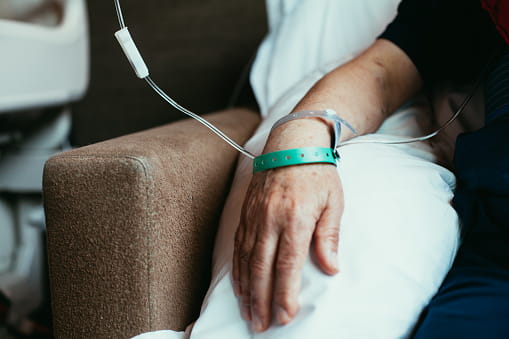 The Ohio State University Wexner Medical Center offers infusion therapies at convenient locations across central Ohio when oral medications no longer offer patients the best results.
The Ohio State University Wexner Medical Center offers infusion therapies at convenient locations across central Ohio when oral medications no longer offer patients the best results.
During an infusion, your prescribed medication is delivered through a small needle inserted under the skin or through a small tube, called a catheter, which is placed in your small intestine via a tiny hole in the stomach wall. If you have a catheter, we can connect this to a convenient portable pump for continuous delivery of medication. Settings on the pump can be adjusted to control the amount of medication provided at different times of the day for maximum benefits with minimum side effects.
A commonly prescribed medication is Duopa, a gel infusion that has proven effective for people with PD who have disabling symptoms that interfere with daily activities, inadequate results or bothersome side effects from current medications, or frequent bouts of disabling rigidity, slow movements, tremor due to “on-off” fluctuations or excessive uncontrollable movements.
Neurosurgical treatments
Many patients with PD can benefit from neurosurgery. Although this may feel like an extreme choice, these surgical treatments are more common than you might think, and your Ohio State Wexner Medical Center neurology team can explain the available options, the details of each procedure and the potential results. Below are two of the most frequent surgical options considered, both only available in central Ohio at the Ohio State Center for Movement Disorders and Neuromodulation.
Deep brain stimulation (DBS)
Deep brain stimulation (DBS) is the most common surgical procedure used to improve motor symptoms, such as tremor, slowed movement, rigidity and stiffness, particularly in more advanced stages of PD previously treated with medication.
During the procedure, electrodes are implanted into the brain and connected to a pacemaker-like device that’s implanted into the chest or abdominal wall. The electrodes deliver tiny electrical pulses to calm abnormal brain signals. Because the device is under your skin, there’s no exposed hardware to interfere with bathing or other daily activities.
Results can often be seen as soon as the device is turned on, and the benefits last many years in most patients. Settings can be adjusted to control the amount of stimulation provided to maximize benefits and minimize side effects.
We will continue to test the strength of the device battery so that we can replace it with a simple procedure when necessary. If a non-rechargeable battery is used in the device, it will usually last two to five years, depending on the settings needed to control your symptoms. If a rechargeable battery is used, it will typically last 15 years.
To improve the accuracy of DBS, Ohio State neurosurgeons carefully study and map each individual’s anatomy prior to surgery. While other hospitals offer DBS, few use this detailed approach — called tractography — which allows us to target and treat a single system of fibers and steer away from systems of fibers that may cause side effects.
DBS is typically appropriate for people with PD who have debilitating hand or leg tremors that fail to respond to medications, their symptoms interfere with daily activities, their medications no longer work or cause severe side effects, or they battle frequent uncontrollable movements called dyskinesia.
If you want to determine if DBS might be a good option for you, your primary care provider or neurologist can refer you for a comprehensive screening and evaluation.
Focused ultrasound ablation (FUSA)
Focused ultrasound ablation (FUSA) is an innovative, noninvasive procedure that can treat individuals with Parkinson’s disease tremor in just one session.
After the patient’s head is shaved and placed into a halo frame to hold it steady, a machine that gives off high-frequency sound waves delivers a strong beam to the specific area of the brain that’s causing tremors. These high-intensity ultrasound beams focus directly onto nerve cells, causing some of them to die, which eliminates tremors.
With FUSA, there are no incisions, anesthetics or radiation needed. It is an outpatient procedure that takes about four hours. The patient is awake the entire time to give real-time feedback to the surgeon, and because these two communicate throughout the surgery, there is no waiting time needed to find out if the tremors are eliminated. Best of all, positive results are permanent and recovery is rapid, with most people returning to normal activities the next day. FUSA can be effective for people with Parkinson’s disease whose tremors have not responded to medication or for patients who are not candidates for DBS or other surgical treatments due to age, personal preference or an existing health condition. If you’d like to be considered for FUSA, your primary care provider or neurologist can request a comprehensive screening and evaluation.
Other surgical options for PD
There are also other surgical options available at the Ohio State Wexner Medical Center that a neurosurgeon may recommend, including two traditional surgeries that have been used for many years to treat PD, pallidotomy and thalamotomy
When the portion of the brain called the globus pallidus interna (GPi) becomes hyperactive, it produces signals that inhibit movement, causing rigidity and slowness of movement. A pallidotomy destroys a part of the GPi so the signals that inhibit movement are reduced and the patient’s symptoms are reduced.
A pallidotomy is very effective for reducing drug-induced dyskinesia — uncontrolled movements caused by a drug — which may make it possible for patients to actually increase their dosage levels of helpful medications after surgery. It may also be a good option for significant improvement of rigidity and bradykinesia — the name for slowness of movement.
While a patient’s tremors may also improve with a pallidotomy, if tremor is the dominant or most bothersome symptom, a thalamotomy is more effective. In this surgery, a portion of the thalamus — the part of the brain triggering tremors — is destroyed. Approximately 80% of patients who have this surgery have complete or nearly complete elimination of their tremor.
Both a pallidotomy and thalamotomy are done under local anesthesia, meaning you aren’t put to sleep. Because the brain feels no pain, the surgery is basically painless, and the patient is able to talk with the surgeon during the procedure and participate in tests that help the surgeon find the exact area in the brain causing symptoms.
Managing symptoms with our nationally recognized therapy program
To help you maintain your highest level of function and movement, the Ohio State Wexner Medical Center has a team of therapists ranked among the best in the nation by U.S. News & World Report. At our movement disorders center, you’ll be working with therapists who specialize in Parkinson’s disease.
Your ability to move can be impacted by a range of issues, from motor skills to your cognitive abilities and mental health, so we have a variety of therapy options to keep you as safe, mobile and independent as possible.
Physical therapy
Our physical therapists focus on maintaining fitness and improving strength, balance, posture, flexibility and coordination. They can help you learn to walk with bigger steps or to walk faster to prevent falls or a wobbly gait. They help patients practice safe transfer on and off of chairs and toilets. A physical therapist can even help with exercises and coping strategies for orthostatic hypotension, the lightheadedness that sometimes happens when standing, a common issue for people with PD.
Because we know that regular exercise can reduce symptoms and improve so many aspects of your mobility, our physical therapists have also developed a variety of fitness options for our patients, including group classes.
Speech therapy
Our movement disorders speech therapists can help you with difficulties swallowing and with slurred speech. One speech therapy technique known as LOUD focuses on increasing vocal loudness and enunciation, so that you can be heard and understood during normal conversation.
Occupational therapy
If you’re struggling with typical daily activities, such as cooking, grooming, eating or any specific skills needed for your work or hobbies, our occupational therapists will share techniques that can reduce the impact of your PD symptoms.
Beyond the targeted physical, speech and occupational therapy you’ll receive as a patient at our Center for Parkinson’s Disease and Other Movement Disorders, the Ohio State Rehabilitation and Physical Therapy Program offers specialty services to address specific issues often faced by people with PD, including:
- Wheelchair Seating and Mobility Clinic – customizes devices to each person for the highest degree of safety, functional independence and comfort
- Outpatient Rehabilitation Assistive Technology – provides customized technology and assistance devices for people with physical, cognitive or sensory disabilities
- Occupational Therapy Driver Rehabilitation Program – supports safe driving through vehicle adaptation and skills development
- Swallowing Evaluation and Treatment Services – develops a personalized treatment plan to improve your overall health with an emphasis on safety, comfort and better nutrition





